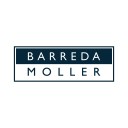When a trademark infringes a copyright?

Published byBarreda Moller

Article 83, paragraph g) of Decision 344, previous Common Regime on Industrial Property, stipulated that should not be registered as trademarks those signs that in relation to third parties’ rights had any of the following impediments: they were titles of literary, artistic or scientific works and they were fictional or symbolic characters which had copyright protection, except where consent for their use had been obtained.
The Court of Justice of the Andean Community, when interpreting Article 83, paragraph g) of Decision 344, has stated that in order that the registration prohibition contained in said article prospers, it is essential that: (i) it be a title protected by copyright, in other words, that it must have originality characteristics and (ii) the use of said title to distinguish a product or service may create confusion in the public between the work and the good or service sought to be distinguished by the same sign.
Article 136, paragraph f) of Decision 486, Common Regime on Industrial Property in force, establishes that shall not be registered as trademarks those signs which use in commerce may unduly affect the right of a third party, particularly when they consist of a sign infringing the copyright of a third party, unless consent of said party has been obtained.
Interpretation made by the Court of Justice of the Andean Community of Article 83, paragraph g) of Decision 344, in Proceedings 167-IP-2006, is applicable to Article 136, paragraph f) of Decision 486 since:
(i) The same Court in said Proceedings stated that “if literal interpretation of this rule is maximized, absurd conclusions could be obtained, such as that it would not be possible the trademark registration of a work title without the consent of the owner of the right therein, but it would proceed indeed the registration of the work itself without need of authorization, on the basis of the unacceptable argument that the legal impediment refers only – “literally” speaking – to the “title” and not to the “work”. (…)”
(ii) The Administrative Court stated that the interpretation made by the Court of Justice of the Andean Community of Article 83, paragraph g) of Decision 344 was inapplicable to Article 136, paragraph f) of Decision 486 since the difference between said articles is that Article 83, paragraph g) of Decision 344 only protected titles of works and fictional or symbolic characters, while Article 136, paragraph f) of Decision 486 protects all works; and in this sense, when the Court of Justice of the Andean Community alludes to the titles of the works, said interpretation will have to be extended to works in general.
According to the above-mentioned, it is inferred that in the Court’s opinion, a proposed trademark infringes the copyright of a third party if: (i) the work which copyright is infringed is original and (ii) the use of said work as trademark may create confusion in consumers with respect to the work, that is, it can lead consumers to believe that the products or services distinguished by the proposed trademark are manufactured or provided by the third party which is owner of the copyright.
This criterion of the Administrative Court has been applied in the following case law issued since the year 2001 up to now:
1) Decision No.109-2001/ TPI-INDECOPI of March 2, 2001, issued in connection with the application for registration of trademark PICAPEDRERO, in class 25.
2) Decision No.1386-2001/TPI-INDECOPI of October 10, 2001, issued in connection with the application for registration of trademark DIE HARD, in class 25.
3) Decision No.0808-2003/TPI-INDECOPI of August 12, 2003, issued in connection with motion for nullity of trademark CASINO MIRAGE AND LABEL, Certificate No.27627, in class 36.
4) Decision No.1279-2012/TPI-INDECOPI of July 23, issued in connection with the application for registration of trademark PACMAN, in class 1.
5) Decision No.1573-2013/TPI-INDECOPI of May 10, 2013, issued in connection with application for registration of trademark MANKEKE, MARINELA AND RAYITA AND FIGURE OF DUCKDE PATO, in class 30.
We do not agree with the criterion of the Administrative Court as there could be cases of applications for the registration of trademarks that we believe should be denied for falling within the registration prohibition set forth in Article 136, paragraph f) of Decision 486 – that is, for affecting the copyright of a third party which consent has not been given-, but that, in application of the Administrative Court’s criterion, would be granted for considering that they do not fall within said registration prohibition.
An example of said cases could be the application for registration of the trademark formed by the combination of words THE FEAST OF THE GOAT, that is, the English translation of the title of the literary work “LA FIESTA DEL CHIVO”, whose author is Mario Vargas Llosa, in any class of the International Classification, without the author’s consent.
In our opinion, this application for registration should be denied as it falls within the registration prohibition set forth in Article 136, paragraph f) of Decision 486, since it affects the copyright that Mario Vargas Llosa has in the title of his literary work “LA FIESTA DEL CHIVO”.
Nevertheless, according to the criterion of the Administrative Court, this registration would be granted as it does not fall within the registration prohibition set forth in Article 136, paragraph f) of Decision 486, since (i) even if the title of the work were considered original, (ii) the use of said title as trademark could not generate confusion in consumers with respect to the title of the work, although it could be believed that there is relationship between the products or services to be distinguished by the proposed trademark and the work, as the combination of the words THE FEAST OF THE GOAT is not graphically, phonetically or conceptually similar to the title “LA FIESTA DEL CHIVO”.

